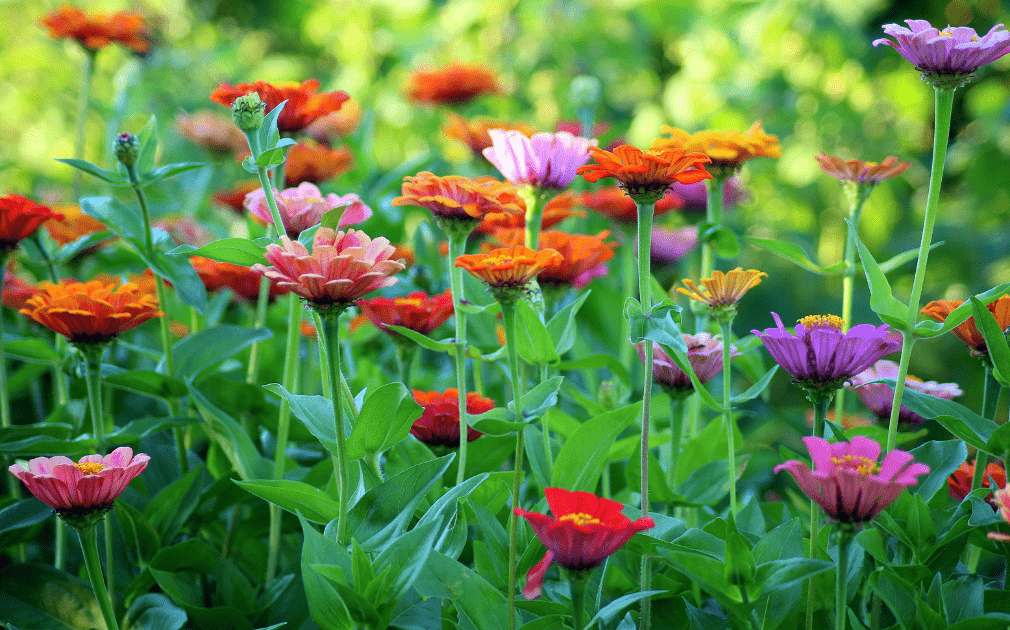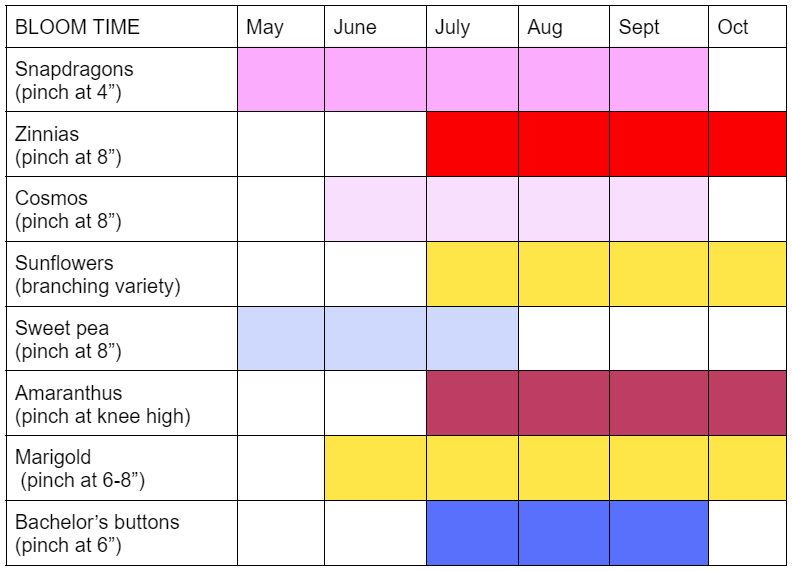“Don’t wait for someone to bring you flowers. Plant your own garden and decorate your own soul.” -Luther Burbank
Walking through my gardens, sometimes it’s hard to think about cutting the flowers to bring them indoors, but the idea of a designated area for plants that are expressly grown to be cut is appealing. Whether you find a spot to fill with flowers or you add a few flowers to your vegetable garden doesn’t matter; what matters is that you get the flowers in the ground and enjoy them.

If it’s your first year, you may want to start with annuals rather than committing space to perennials. Do a little research to find an array of plants that bloom throughout the summer. You will need long-stemmed flowers, some blooms to serve as focal points in your bouquets, and maybe some with a particular scent that you love. You’ll want some smaller blooms with accent colors, some filler plants with small, spread-out blossoms (think dill, or baby’s breath), and some plants with beautiful foliage. My mom always liked some spikey greens in there, too. I did a little homework for you and included a chart below with bloom times.
For first-timers, I recommend purchasing plant starts (a.k.a. seedlings), but if you have some gardening experience, and some artificial lighting, try starting some seeds indoors. You can also direct seed in the ground, but will have later blooms with that method.
Here are some thoughts about flowers – I’ll leave the colors to you!
- Select full size varieties rather than dwarf varieties; 18-24” is a good goal.
- Snapdragons, zinnias and cosmos can come in variety packs of colors, giving you more choice in terms of bouquets.
- Annuals bloom for a limited time, generally not the whole season. For flowers throughout the summer, plant a pack of plants and some seeds at the same time, so that when the first batch fades away, the next batch will be ready to bloom.
- For more blooms, pinch back the center stems of the seedlings you grow. Before the stems have flower buds, grasp the center stem with your fingers just above a set of leaves and pinch off the top 3-4” of the plant. This will cause it to branch out and grow more flowers. Plant starts from a garden center will have already been pinched. When you pinch off the top of the plant, plant it in the soil right there and water it. Some of the pinched stems will root.
- Keep spent blooms trimmed. If the flower head starts to die, your plant will stop blooming and start maturing seeds. Off with their heads!
- Watch your plant foliage and blooms. If the foliage begins to fade or the blooms become less prolific, feed with a liquid fertilizer 15-30-50 or 10-30-20. That little bit of extra phosphorus (the middle number) will encourage more blooms.
Some Flowers to Consider

Dill and feverfew are good options for bouquet fillers. I recommend purple and green basil as well as coleus for it’s stunning foliage. Both of these benefit from pinching the central stem to promote branching.

If you’d like to try growing from seed, this is the time to order those. Check back in early May for my next post on planting your cutting garden!
Juli Pomainville is a Master Gardener Volunteer who has been growing flowers and vegetables in Pierrepont since she was a child in 4-H. She enjoys experimenting with trendy gardening techniques, tending an annual flower garden for residents at a local nursing home, and teaching Seed to Supper classes for beginning gardeners.
